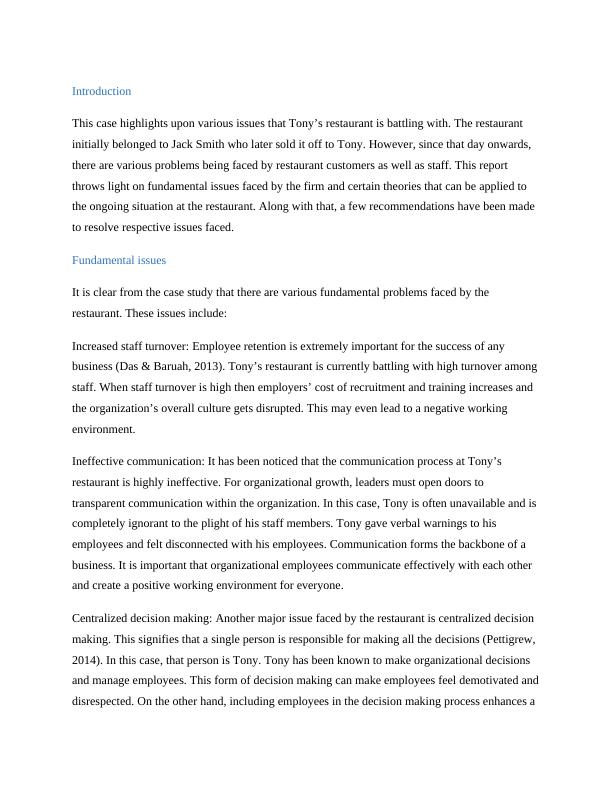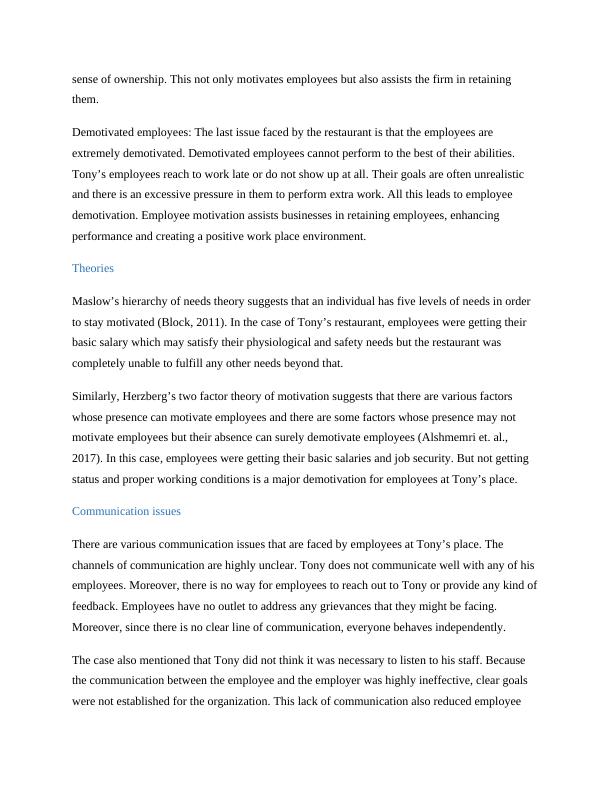Organizational Behavior: A Case Study of Tony’s Place
Analyzing the different management styles and results of two restaurant managers within a national restaurant chain.
7 Pages1985 Words226 Views
Added on 2023-06-11
About This Document
This case study highlights the organizational and communication issues faced by Tony’s restaurant. The report suggests recommendations to improve communication, goal setting, leadership style, employee retention, and motivation.
Organizational Behavior: A Case Study of Tony’s Place
Analyzing the different management styles and results of two restaurant managers within a national restaurant chain.
Added on 2023-06-11
ShareRelated Documents
End of preview
Want to access all the pages? Upload your documents or become a member.
Organizational Issues: Motivation, Communication, and Decision Making
|12
|3753
|460
Organizational Behavior Issues: Motivation, Communication, and Decision Making
|17
|1775
|202
Employee Motivation: A Contemporary Issue
|7
|1349
|174
Management Issues - Imperical Hotel
|9
|2457
|34
Causes and Effects of Managerial Challenges in Hospitality Sector
|16
|6186
|93
Organizational Behaviour Concepts in A David & Co Ltd
|15
|4807
|324



